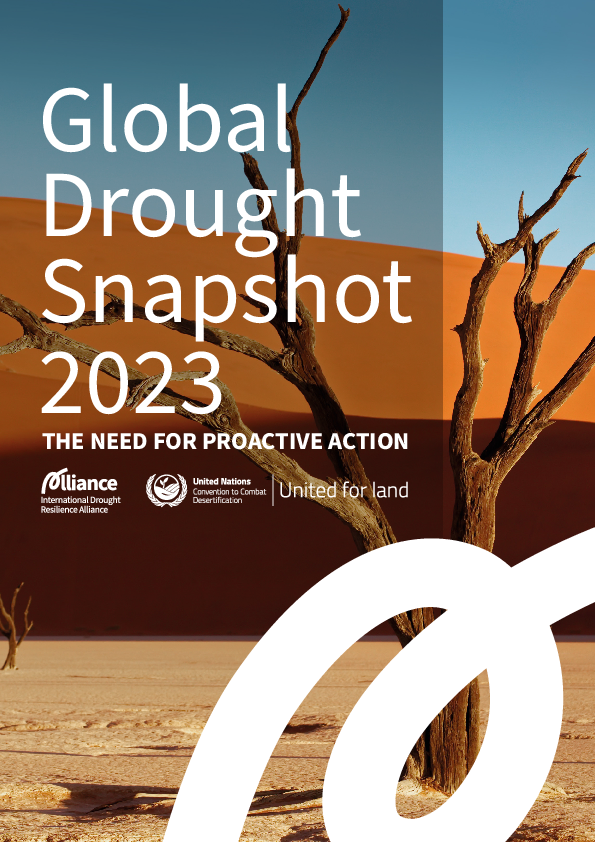 Read this article in French
Read this article in French- Share this article
- Subscribe to our newsletter
Global Drought Snapshot
Few if any hazards claim more lives, cause more economic loss and affect more sectors of societies than drought. This is the key takeaway from the report Global Drought Snapshot launched by the UN Convention to Combat Desertification (UNCCD) in collaboration with International Drought Resilience Alliance (IDRA) at the outset of COP28 climate talks in the United Arab Emirates in December 2023.
Drought-related data based on research from the past two years and compiled by the UN point to “an unprecedented emergency on a planetary scale, where the massive impacts of human-induced droughts are only starting to unfold.”
Several findings in the report highlight land restoration, sustainable land management and nature-positive agricultural practices as critical aspects of building global drought resilience. By adopting nature-positive farming techniques, such as drought-resistant crops, efficient irrigation methods, and no-till and other soil conservation practices, farmers can reduce the impact of drought on their crops and incomes.
Efficient water management is another key component of global drought resilience. This includes investing in sustainable water supply systems, conservation measures and water-efficient technologies.
Disaster preparedness and early warning systems are also essential for global drought resilience. Investing in meteorological monitoring, data collection and risk assessment tools can help respond quickly to drought emergencies and minimise impacts. Building global drought resilience requires international cooperation, knowledge sharing, and environmental and social justice.
Drought data from the report; selected highlights on agriculture and forests:
- 70 %: Cereal crops damaged by drought in the Mediterranean, 2016–2018
- 33 %: Loss of grazing land in South Africa due to drought (Ruwanza et al., 2022)
- Double or triple: Expected forest losses in the Mediterranean region at 3°C warming compared to current risk (Rossi et al., 2023)
- 5: Consecutive rainfall season failures in the Horn of Africa, causing the region’s worst drought in 40 years (with Ethiopia, Kenya and Somalia particularly hard hit). This has contributed to reduced agricultural productivity, food insecurity and high food prices (WMO, 2023).
- USD 70 billion: Africa’s drought-related economic losses in the past 50 years (WMO, 2022).
- 44 %: Expected drop in Argentina’s soybean production in 2023 relative to the last five years, the lowest harvest since 1988/89, contributing to an estimated 3% drop in Argentina’s GDP for 2023 (EU Science Hub, 2023)
(UNCCD/ile)
Read more and download the report on the UNCCD website





Add a comment
Be the First to Comment